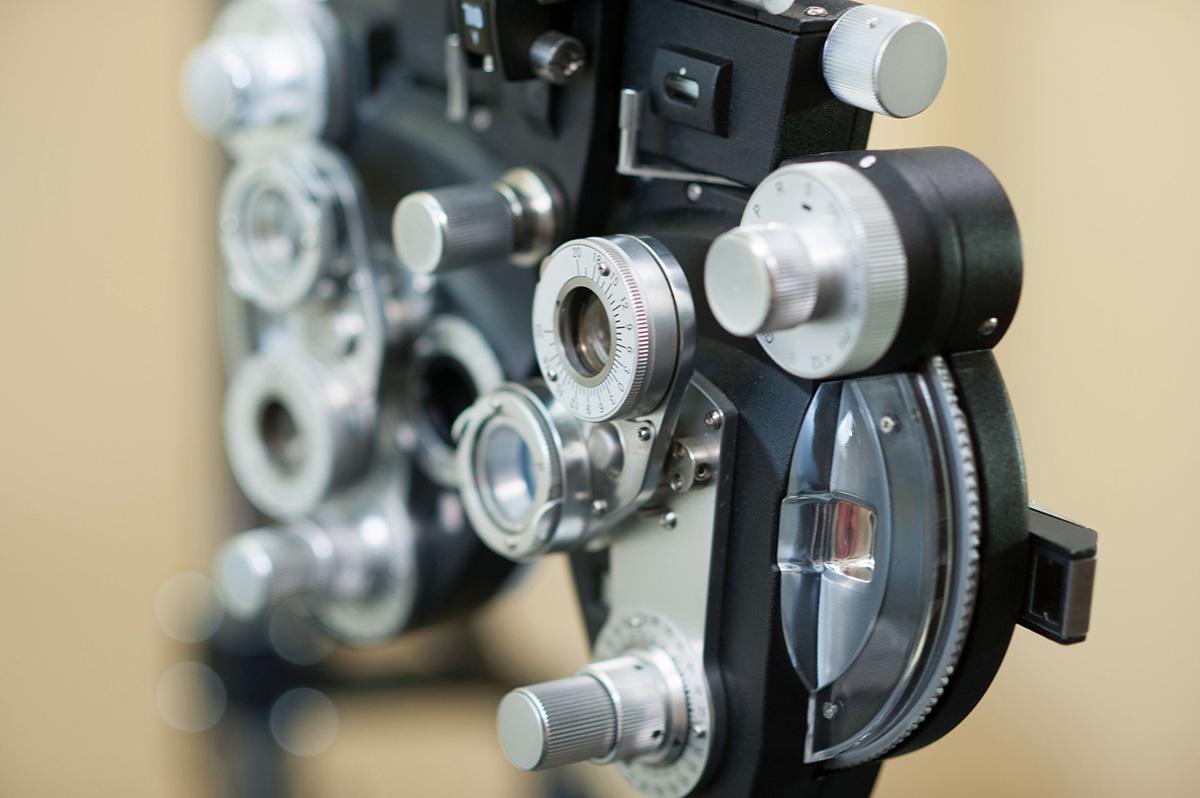Focus of the Month
|
Most patients are used to coming to the optometrist to get a new prescription, but don’t realize everything the eye doctor does to maintain the health of their eyes. A comprehensive eye exam will not only check your prescription, but will check for any signs of eye diseases such as macular degeneration or glaucoma.
A technician will begin by taking photos of the back surface of the inside your eyes. This lets us not only get a clear view of your eyes, but allows us to track any eye conditions we may find over time. |
We also check eye pressures for all of our patients; this test can help us to know if a patient has glaucoma or not.
In the exam room, the technician will review medical history and test how well the patient is currently seeing, with or without any correction. The technician will then add a dilation drop to the patient’s eyes. This widens the pupil and allow Dr. Humpherys to see more clearly inside the eye.
When Dr. Humpherys enters the room, he will check to see if the patient’s prescription has changed. He will then look in the eye with a machine called a slit lamp. This allows him to look at the front surface, the lens, and the back interior surface of the eye. He will be able to see signs of macular degeneration or glaucoma, or tell the patient if cataracts are developing. He will use a second machine to check the health of the retina. He will review the information with the patient and make recommendations based on his findings.
If needed, the technician will do special testing. Not only can a comprehensive eye exam find eye diseases, it can also find warning signs of other health problems such as diabetes, high blood pressure, and even tumors!
A comprehensive eye exam will be able to find any problems and give you piece of mind. Schedule your yearly appointment with Dr. Humpherys or Dr. Palmer today!
In the exam room, the technician will review medical history and test how well the patient is currently seeing, with or without any correction. The technician will then add a dilation drop to the patient’s eyes. This widens the pupil and allow Dr. Humpherys to see more clearly inside the eye.
When Dr. Humpherys enters the room, he will check to see if the patient’s prescription has changed. He will then look in the eye with a machine called a slit lamp. This allows him to look at the front surface, the lens, and the back interior surface of the eye. He will be able to see signs of macular degeneration or glaucoma, or tell the patient if cataracts are developing. He will use a second machine to check the health of the retina. He will review the information with the patient and make recommendations based on his findings.
If needed, the technician will do special testing. Not only can a comprehensive eye exam find eye diseases, it can also find warning signs of other health problems such as diabetes, high blood pressure, and even tumors!
A comprehensive eye exam will be able to find any problems and give you piece of mind. Schedule your yearly appointment with Dr. Humpherys or Dr. Palmer today!








